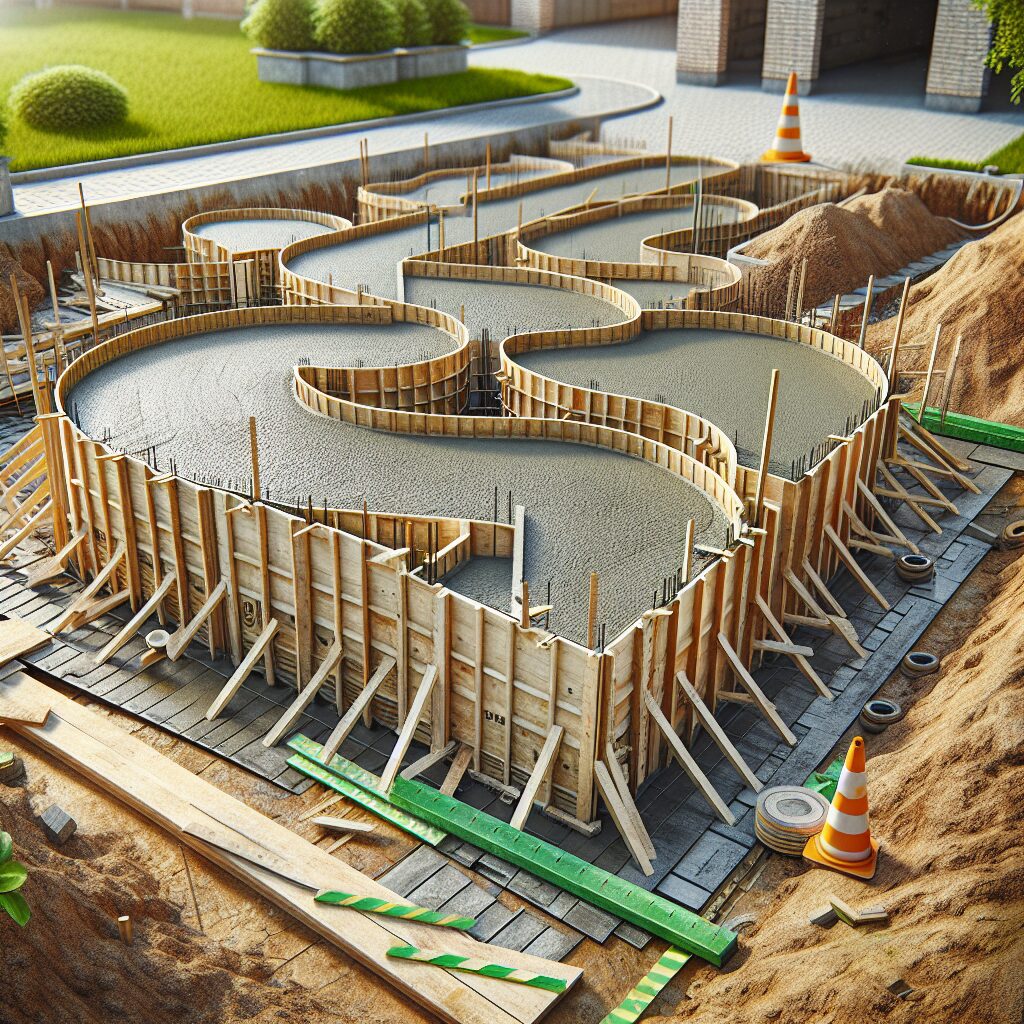Introduction
In the construction and surveying industries, the smallest materials can make the biggest difference. Understanding construction stakes and lath materials is essential for anyone involved in construction or surveying. These tools play a critical role in project planning and execution, helping to ensure that measurements are accurate and that the layout is correct. In this article, readers will gain insights into the types of stakes and lath available, their applications, and best practices for use. Whether you are a seasoned contractor or a DIY enthusiast, this guide will provide valuable information to enhance your projects.
What are Construction Stakes and Lath Materials?
Construction stakes and lath materials are simple yet essential components in the construction process.
Definition
- Construction Stakes: These are typically made of wood, plastic, or metal and are used to mark boundaries, elevations, and layout points on a construction site. They serve as physical indicators that guide the placement of structures.
- Lath Materials: Lath refers to thin strips of wood or other materials used to support or reinforce structures. In construction, lath is often used for marking lines or creating forms for concrete.
Context and Background
The history of construction stakes and lath materials dates back centuries, evolving from rudimentary wooden stakes to modern materials that provide enhanced durability and functionality. Since 1954, companies like Stan’s Industrial Manufacturing have been at the forefront of producing quality construction stakes and lath materials, introducing innovations that cater to the changing needs of the construction industry.
Related Terms
When discussing construction stakes and lath materials, you may encounter terms such as:
- surveying stakes: Specifically designed stakes used in land surveying to mark points of interest or measurements.
- wood lath: Traditional wooden strips used for various construction applications, including plastering and drywall support.
- marking materials: Products like spray paint or chalk used in conjunction with stakes and lath for accurate delineation on sites.
Why are Construction Stakes and Lath Materials Important?
Construction stakes and lath materials play a vital role in ensuring the success of construction projects. Here are several reasons why they are important:
Benefits
- Essential for Accurate site layout: Properly placed stakes provide a clear visual representation of the project boundaries, ensuring that construction adheres to design specifications.
- Aid in Visualizing Project Boundaries: Lath materials can be used to create a framework that helps teams visualize the intended layout before breaking ground.
- Durable and Reliable: High-quality stakes and lath withstand various weather conditions and site challenges, providing long-lasting support during the construction process.
Supporting Evidence
According to industry standards, projects that utilize proper marking and layout techniques experience a significant reduction in errors. A study by the American Society of Civil Engineers found that accurate site layout can reduce project delays by up to 30%, emphasizing the importance of using construction stakes and lath materials effectively.


How to Use/Implement Construction Stakes and Lath Materials
Implementing construction stakes and lath materials correctly can significantly improve project outcomes. Here are actionable steps to ensure effective use:
Step 1: Selecting the Right Type for Your Project
- Assess Your Needs: Determine the purpose of the stakes and lath. For heavy-duty projects, consider metal stakes, while lighter projects may only require wooden stakes.
- Choose Quality Materials: Look for stakes and lath that are treated for weather resistance to ensure durability throughout the project.
Step 2: Proper Installation Techniques for Stakes
- Placement: Drive stakes into the ground at the corners of the project area, ensuring they are secure and visible.
- Maintain Alignment: Use a string line to connect stakes, ensuring they are in alignment for accurate measurements.
- Height Consideration: Ensure that the tops of the stakes are at a consistent height to avoid confusion during layout.
Step 3: Effective Use of Lath for Marking
- Marking Lines: Use lath to create straight lines across the site. Attach lath to stakes at regular intervals to maintain a consistent reference.
- Creative Uses: Lath can also be used for temporary fencing or to create templates for cutting materials.
Examples of Successful Implementation
Consider a recent commercial development project where construction stakes were employed to outline the building’s footprint. The clear visual boundaries facilitated communication among the team, leading to a smoother workflow and timely completion. Similarly, lath was used to mark elevation changes, ensuring that the grading was executed accurately.
Common Challenges with Construction Stakes and Lath Materials
While construction stakes and lath materials are invaluable, they can present challenges if not used correctly. Here are some common obstacles and advice on overcoming them:
Potential Obstacles
- Misalignment: If stakes are not placed correctly, it can lead to significant layout errors. This often results in costly rework and delays.
- Weather Conditions: Heavy rains or winds can displace stakes or lath, leading to inaccuracies.
Solutions
- Double-Check Placement: Regularly verify the positioning of stakes, especially after adverse weather conditions, to maintain accuracy.
- Use Reinforcements: In windy conditions, consider using heavier stakes or securing lath with additional supports to prevent movement.
Misconceptions
Some may believe that construction stakes are only necessary for large projects. However, even small DIY projects benefit from clear marking and layout, making stakes and lath essential tools for every construction scenario.
Conclusion
Construction stakes and lath materials are critical components in achieving successful construction projects. They provide the necessary precision and clarity required for accurate site layout, ensuring that projects remain on track and within budget. By understanding the types and applications of these materials, as well as how to implement them effectively, construction professionals and DIY enthusiasts alike can enhance their workflows and project outcomes.
We encourage you to share your thoughts on this topic, try implementing these strategies in your next project, and explore more about construction best practices!
FAQs
1. What are construction stakes used for?
Construction stakes are primarily used to mark boundaries, elevations, and layout points on a construction site. They serve as physical indicators that help guide the placement of structures and ensure accuracy during the construction process.
2. What materials are commonly used for construction stakes?
Construction stakes can be made from various materials, including wood, plastic, and metal. Each material serves different purposes, with wood stakes being common for light-duty tasks and metal stakes used for more demanding applications.
3. How do you install construction stakes properly?
To install construction stakes, drive them firmly into the ground at the project’s corners, ensuring they are secure and visible. Use a string line to connect the stakes for alignment and maintain a consistent height for easier reference during layout.
4. What is lath material used for in construction?
Lath materials are thin strips of wood or other materials used to support structures or mark lines on construction sites. They help reinforce areas, create templates, or serve as guides for various construction tasks.
5. Can construction stakes be reused?
Yes, construction stakes can often be reused if they are in good condition. Wooden stakes may show wear over time, but metal stakes are especially durable and can last for multiple projects.
6. How can I ensure the accuracy of my layout using stakes and lath?
To ensure accuracy, regularly check the alignment and height of your stakes. Use a level to confirm that your lath is straight and secure to maintain reference lines throughout the project.
7. Are there alternative marking methods to stakes and lath?
Yes, alternatives include spray paint, chalk lines, and survey flags. However, stakes and lath provide a more physical and visible reference that can be advantageous in many construction scenarios.
8. What should I consider when choosing lath materials?
When choosing lath materials, consider factors such as the project’s requirements, the weather conditions at the site, and the durability needed. Treated wood lath is often preferred for outdoor use.
9. How do weather conditions affect construction stakes and lath?
Weather conditions can displace stakes and lath, leading to layout inaccuracies. It’s advisable to check their positioning frequently, especially after heavy rain or strong winds, to ensure ongoing accuracy.
10. Are there industry standards for using construction stakes and lath?
Yes, various industry standards and best practices guide the use of construction stakes and lath. Following these standards can help ensure safety, accuracy, and compliance with local regulations during construction projects.
Resource Links:
1. Construction Materials Online – Offers a variety of construction stakes and lath materials for accurate site layout and marking.
2. Home Depot – Retailer providing a selection of stakes and lath used in construction and landscaping projects.
3. Lowe’s – Features a range of construction stakes and lath products suitable for various building applications.

